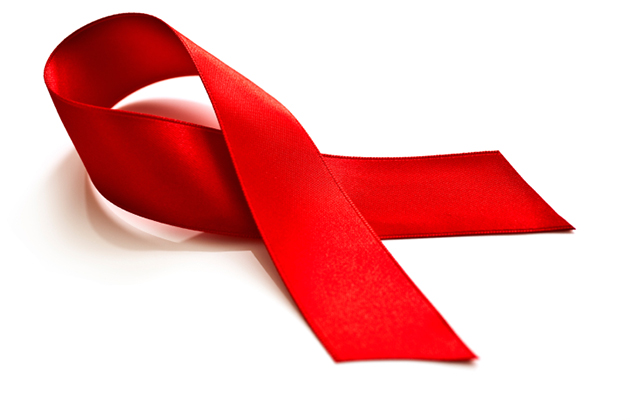In the more than two decades that psychology professor Seth Kalichman has devoted to HIV/AIDS prevention, he has seen the public health landscape change dramatically. This is what he had hoped for when, as a graduate student doing a clinical psychology internship, he worked with researcher Jeffrey A. Kelly at the Medical College of Wisconsin.
Kelly, a pioneer in community AIDS prevention, was one of the first to study at-risk populations in an attempt to discern the types of programs that might help prevent the spread of the disease.
“I was blown away when I started working with Kelly during my internship in 1991,” Kalichman says. “This was really psychology in action; it was public health on a comprehensive scale that could actually make a significant impact on a serious and increasingly widespread problem.”
Kalichman’s research has focused on the Southern United Sates and South Africa. He is a principal investigator for the Center for Health, Intervention, and Prevention (CHIP) one of UConn’s leading research institutes, and director of the Southeast HIV/AIDS Research and Evaluation Project (SHARE). He received the 2005 Distinguished Scientist Award from the Society for Behavioral Medicine, and is the author of five books on HIV/AIDS prevention and care.
There’s a real possibility that in the not too distant future we will look at HIV/AIDS in much the same way we look at diabetes and other chronic diseases that can be largely controlled by making certain lifestyle changes and taking appropriate medication.
In recognition of World AIDS Awareness Month, Kalichman discussed with UConn Today the changes he has observed in HIV/AIDS prevention.
Q: In the 1980s, a diagnosis of HIV/AIDS was viewed as a death sentence. In 2013, that doesn’t seem to be the case. What has happened in the intervening years?
A: The HIV/AIDS epidemic has gotten worse everywhere over the years, but the proportions don’t change very much. The epidemic in the U.S. has always been more severe than in some other Western countries, for example, Germany. And the incidence in the U.K. is less than in the U.S. but more than in Germany. The Caribbean remains heavily affected, and the sub-Saharan region of Africa continues to be the most heavily impacted region in the world.
But, there are always two sides to HIV infection. There are the new infections – the prevention side, which is where I concentrate – and then there is the disease side for people who already have the infection.
We continue to see new infections, but people who are already infected are doing much better because of advances in treatment. And treatment is becoming more available everywhere, including in southern Africa.
In my work in Atlanta, the research shows that our study participants are living longer, healthier lives, often into old age. So most of them are doing pretty well, and that’s because they have access to antiretroviral therapies which make AIDS resemble a chronic illness rather than an acute, life-threatening condition.
Q: We’ve learned so much over the years about how the disease is transmitted and how its spread can be prevented. Why, then, are there still so many new cases here in the U.S.?
A: There are new infections in this country primarily because of where they occur. We’ve had considerable success in reducing the rate of infection among injection drug users because of access to needle exchange programs – places where addicts can exchange used needles for sterile needles – combined with education. New York City is a prime example where new cases among drug users have declined dramatically.
We haven’t been as successful in sexual networks including gay men, men who are bisexual, and heterosexually transmitted infections – usually between drug users. When it comes to sexual behavior, it’s much more difficult to elicit changes. People have historically had a real aversion to the use of condoms, which help reduce the transmission dramatically, and that’s a behavior we’re trying to change.
Q: Is the story the same everywhere?
A: No, in sub-Saharan Africa, HIV/AIDS is almost entirely a heterosexual disease. One of the reasons is because there is a high rate of other STDs – gonorrhea, syphilis, genital herpes – and that kind of background prevalence can really ramp up the transmissibility and susceptibility of HIV infection.
There are other reasons as well, including a lack of adequate health services for treating and controlling those STDs and a lack of access to HIV testing and treatment. So people have been walking around infected for years and not knowing it. The situation is finally getting better, though. There is more testing available and better access to treatment.
One factor that is important everywhere – no matter where in the world – and that is sexual mixing and sexual networks. It’s not so much how many sex partners a person has or what they do, but it’s how people become connected. Once HIV is introduced within a network, then everyone is at risk. It’s the same with injection drug use. You can have a closed network with people who share needles, but as long as no one is infected [with HIV] then there’s no danger of transmitting it. However, as soon as one person breaks the tie and introduces HIV [to the network], then everyone is at a high degree of risk.
Q: It seems as if there are a lot of factors involved.
A: HIV is a very complex problem. It’s complex biologically, but it’s also complex socially and behaviorally. The prevalence of HIV is higher in impoverished areas because of the co-occurring drug abuse. But at the same time, middle class people who are not monogamous are as much at risk as people who live in poverty. A non-monogamous couple, whether they are gay or straight, will always be at more risk than a monogamous couple.
Q: So are we making any progress?
A: Oh, remarkable progress. This is an extremely exciting time to be involved with HIV/AIDs prevention. In addition to the reduction in HIV infection among drug users in New York City and other large urban areas, the reality is that we should never see a baby born with HIV infection in the world ever again.
We have learned that if you treat an HIV-infected mother with antiretroviral drugs, perform a C-section when she’s due to give birth, and substitute formula for breast feeding, the risk of a baby becoming infected is nearly zero.
When you hear people talking about ending AIDS, I think that’s a real possibility with babies. It’s happening here [in the US], in Brazil, in Botswana – it’s getting better in South Africa. It’s all about testing every pregnant woman, offering treatment, offering alternatives to breast feeding – it’s an amazing thing to see.
Another thing that has begun to happen in the last two or three years is exploiting the use of antiretroviral therapies for prevention. It’s a remarkable time to be part of HIV research because we can see that as people are treated, they become less infectious – so with earlier treatment people can manage their disease better.
This means that if people have access to treatment, if they have help taking their medications on schedule, if they are tested for other STDs and treated if necessary – then they have a very low risk of infecting a partner.
It’s more controversial, but there’s also a movement towards offering antiretroviral treatment to people who are not infected but who are at high risk. So if you have someone who is unaffected but lives in an impoverished inner city, and refuses to use condoms, but who takes antiretrovirals on a daily basis, he’s reduced the chance of becoming infected by at least 90 percent. Not everyone likes this option – it’s certainly a lot more expensive than using condoms – but when you think of it from a public health and prevention perspective, it’s remarkable that a combination of things, including effective treatment, testing, the possibility of offering therapy to those who are not yet infected all combined have a great promise of reducing HIV infections.
I think that there’s a real possibility that in the not too distant future we will look at HIV/AIDS in much the same way we look at diabetes and other chronic diseases that can be largely controlled by making certain lifestyle changes and taking appropriate medication. This doesn’t mean that the disease is going to be eliminated entirely, but it does mean people can live fairly normal lives with it.
December is World AIDS Awareness Month.



